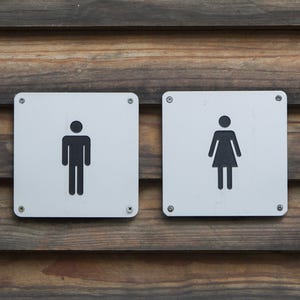Cyrus image from
When Miley Cyrus opened up in Variety this October about how she identifies as pansexual, the media clamored to define the term.
Her revelation — that she is attracted to all different kinds of people, regardless of their biological sex or gender identity — wasn't overwhelmingly dismissed as youthful experimenting. It isn't becoming a patronizing footnote in her personal reinvention.
This tells us something powerful about the moment we're in.
The public's reaction to Cyrus, much like its handling of Bruce Jenner's transformation to Caitlyn (the correct pronoun use was swift), underscores a significant change in how we treat gender in America and signals a more nuanced understanding of just how complex it is to discover and define who we are.
"We are embracing more complicated thinking that is allowing all of us as a culture to think about multiplicity rather than binaries," said Michael Bronski , a women's studies professor at Harvard. "We as humans know that nothing is simple. The 40-year-old man in a heterosexual marriage may not be happy and that 13-year-old tomboy might not be a lesbian."
Conforming to gender roles doesn't guarantee fulfillment, and rejecting them doesn't always mean what we think.
An important part of answering "who am I?" has always been tied to gender. Most of us accepted that there were only two options: male or female. If you have a penis, you are male. If you have a vagina, you are female. When people historically deviated from this norm, they were told to get back in the box.
"We make assumptions about what we see and what that means for how people feel inside, but for as long as we have a historical record, we know people have sometimes felt a different way than they appear," said Tey Meadow, a sociology professor at Columbia University .
The gender binary, experts say, is a cultural construct. It does not capture the rich and varied arrangements available for one's sexual and gender identities. And it does not align with the unfettered attitude of a rising generation of young people who are increasingly gender fluid, eschew fixed labels and experiment with a host of new terms to explain who they are and how they live.
"Young people will lead us in directions that we have never imagined," said Sarah Richardson, a professor of social sciences at Harvard who studies what she calls gender's "proliferating spectrum." On it, she said, we can move in many directions.
While more and more young people are transcending gender norms, gender fluidity is nothing new. French cross-dressing heroine Joan of Arc was burned at the stake for wearing men's clothing, Bronski said. There are hundreds of documented cases of women who dressed like men to fight in the Civil War. Experts say transgender expression was present in the Middle Ages and during the Renaissance. Gender non-conforming people have existed in many cultures throughout history.
If the roots of gender fluidity are ancient, one wonders why the concept of gender is getting so much attention now.
"I think it's something that's been happening in permutations for a long time," Meadow said. "The media's interest in it right now is a product of decades of struggle of people just trying to live their lives."
A more sophisticated view of gender seems to be everywhere we look.
Facebook now offers a custom option for gender and asks which pronoun you prefer.Orange Is the New Black star Laverne Cox made history in 2014 when she became the first openly transgender person to be nominated for an Emmy. Amazon's critically acclaimed Transparent is expanding our ideas of identity and love.
CoverGirl just introduced its first-ever CoverBoy at the same time female celebrities such as Alicia Keys are embracing a no-makeup trend. Jaden Smith , the son of Jada Pinkett Smith and Will Smith , has become an androgynous fashion icon by rejecting gender norms.
There are many forces driving these changes. Everything from more accessible medical technologies that offer hormone therapies to a social media environment where it's easier to find someone who can reassure you it's OK to be who you are.
"The stage has been set for decades, with the feminist movement, with the gay rights movement, with a movement toward more openness and less shame, with the continuing focus on the individual," said Paula Kamen, author of Her Way: Young Women Remake the Sexual Revolution. "It's one of the biggest stories in the last 30 years, but it hasn't happened in one big moment. It's been happening under the surface."
There is another palpable reason why the conversation about gender has been thrust into the public consciousness: In recent years, we have developed a lexicon that helps us talk about it. Words like pansexuality, gender fluidity and gender non-conformity are more prevalent than ever.
Todd Reeser, director of the gender studies program at the University of Pittsburgh , says that in the past 15 years, he has seen a marked shift among his students in how they talk about gender, and "how much more intellectually they think about questions" of gender identity.
The University of Pittsburgh's genders studies program has three times the number of students this year than it did 10 years ago.
As with all social change, there is backlash. The slow demise of a long-established gender order has agitated those who view the binary as normal, natural and essential to America's way of life. The battle over where transgender people can go to the bathroom is one of the most visible examples of resistance.
Experts say the future is not one where gender matters less. It's one where gender matters greatly, where we can change, improvise and rediscover our identities.
But before a future can exist where your gender does not determine your status in the world, there is something we must answer:
"Who do we believe people can be?" Meadow said.
In a country where individual freedom is a fundamental component of its own identity, it seems the answer should be obvious: Anything you choose.




No comments:
Post a Comment